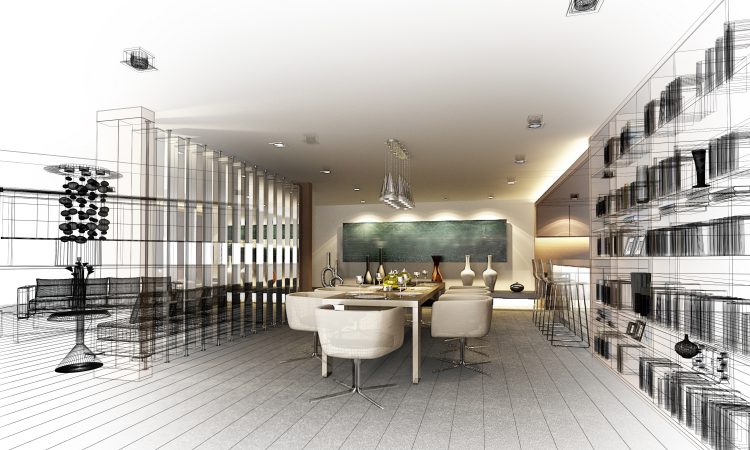Any design process is a way to express your creativity and achieve satisfaction and self-realization. Furniture design is not an exception. Nowadays, most experienced carpenters design their products on a computer before producing it. Moreover, no one is surprised that such design process takes place in 3D space. There are various CAD system on the market today, which offer a wide range of design possibilities – from universal CAD systems like SketchUp and AutoCAD to specialized for furniture design software. Working with a universal CAD system you can create a pretty decent 3D furniture model. Modeling allows clarifying the structure of your creation and how it must be produced and built. Perfect, right? At least it would be if not the following largest pains that furniture designer runs into? Continue reading…
Insights
In my personal opinion first and most important purpose of the home is to provide comfort, coziness and relaxing environment. How different people understand those things concepts should be considered as the main inspiration for an interior. Sometimes by following trends and design rules we forget to tend the most important aspect – who will be living in the space. On the other hand, only following clients‘ requirements and/or „your heart“ if you are redesigning on your own, might lead to quite a catastrophic result. Therefore it‘s important not to lose your head and think through what should be the final results. Especially when you have a small space to work with and considering how many „do‘s and don‘t‘s“ are flaring around small spaces interior design. Continue reading…
Work with materials and colors
Any design is closely related to the selection of materials and their application in the construction. Furniture design is no exception. However, unlike machinery, where the correct selection of material has a significant influence on the functional, cost-performance characteristics of the machine being developed, furniture design more closely relates to the aesthetics created by the furniture designer. And as
it is well known the aesthetics of furniture is a very important factor for successful furniture sales process.
The design of the furniture could distinguish the following steps: Continue reading…
Many reasons to have one file
Some users wanted to see the final visual result of their creation instantly. Others felt the need to work as a team and share their data with co-workers. Also, there were users who required to have all materials and manipulate it fast.
All this giant tangled mess of wishes and issues were presented for us to solve. Soon we figured that there was no room for workarounds. We had to create and implement a new mechanism which would satisfy all customer’s needs and be up-and-coming in the future.
Another year has passed, and here’s the launch of a new version of Woodwork for Inventor.
Since the beginning, we have been praising that we have ideas for the next 5 years and speculated that after that we might take a rest. But reality turned out to be completely different – today’s backlogs is exploding from ideas and goals. It shouldn’t have been a surprise because the amount of Woodwork for Inventor users is growing every week and the more users – the more feedback we get. So when we gather all user’s remarks, partner suggestions, our own insights we have a problem not with the lack of ideas but with the necessity to choose what to develop next. So we sort it, prioritize and always push ourselves to do as much as possible.
And we will do our best to keep the pace. Continue reading…
In the last part, we discussed what design methods is best for furniture design in spaces given by interior planner.
In this section, we will talk about changes in the plan and how to handle it in the structure of the furniture.
It often happens that after the coordination and during the execution of the order, it turns out that something has changed in the premises – the use of the premises, the door has been moved, the engineering networks that weren‘t foreseen at the beginning was installed, etc. In this case, the constructor has to adjust a layout model and modify the structure of the furniture accordingly. Continue reading…
In the previous part, we have discussed the difference between mass production furniture design and bespoke furniture design. We defined what challenges a constructor face and discussed the problems of importing premises layout in his CAD system.
In this section, we will discuss how to design furniture based on premises layout or model provided by a planner or architect.
The structure of the furniture is dictated by the space allocated to it. Even when designing series furniture that does not apply to a particular space, the designers determine the main volumes and, based on them, design furniture. Meanwhile, when designing furniture for a particular room, its design inevitably has to refer to that space – the volume allocated to that furniture.
Furniture design can be categorized by many criteria – furniture type, materials, tools used for manufacturing, etc. In this article, we’ll look at the challenges faced by companies that deal with projects or bespoke production.
In serial production, the context is not something that must be considered. When designing a table for mass production designer solve ergonomic and technological questions of furniture. The placement and adjustment for specific premises questions are left for the user. Working with projects or bespoke production is the opposite of mass production. The designer is responsible not only for the design itself but for furniture integration in the specific interior as well. Wall closets, kitchens, shops, ships – only a few from many typical situations when furniture designer MUST know where this furniture will be placed. Continue reading…
Goals of furniture design software
Two main goals of furniture design software are:
- To shorten the design process, i.e. increase designers’ capacity;
- To reduce design errors amount.
Lots of woodworkers love their tools, which they use for the design of furniture. They are comfortable using it, they know how it works and they know the flaws software has and workarounds to correct those flaws. What else would you need, right? Well, that is not the way anymore. Although your software doe’s whatever it suppose to do, that doesn’t mean the same job couldn’t be done better, faster, easier. Just imagine if there would be a machine, which could transport you from one place to another in seconds. You could move from home to work and backward, to shop, to pick up kids from school in seconds. Would you still want to go back to your car and spend hours in traffic jams, instead of dedicating this time for family, work or just yourself? Not so much, ha? The same rule works for design software, while the old ways still work – it’s not the best anymore. So check out these 4 signs and decide if it’s time for you to upgrade your furniture design software: Continue reading…














